The Netherlands Red Cross’ data and digital team, 510, has become one of the leading establishments supporting humanitarian organizations in providing aid to people affected in some of the world’s most hazardous and conflict-ridden areas in innovative ways. Together with the 510 team, we are looking at the different thematic areas in which 510 operates and has made impact throughout the years.
‘We support National Societies with data and digital products and services for Anticipatory Action, Cash & Voucher Assistance, Emergency support, Community Engagement & Accountability and Water & Landscape. Our dedicated team of staff, متطوعون محترفون و research students are the backbone of our work. It’s incredible to see how many National Societies we have been able to support with improving their humanitarian operations’
Maarten van der Veen (founder and team lead 510)
الإجراء الاستباقي
Anticipatory Action turns forecasts and warnings from descriptions of what the weather will be into assessments of what the weather will do, enabling organizations and individuals across the world to mitigate the impacts brought by extreme weather and climate events such as typhoons, floods, and droughts. Our Anticipatory Action work involves identifying key indicators of these events and the impact on social, economic, and environmental systems, and developing strategies and solutions that can mitigate the negative impacts of these drivers and help build community and societal resilience.

Anticipatory action is crucial in the humanitarian field as it shifts the focus from reactive responses to proactive measures, mitigating the impact of crises before they unfold.”
Aklilu Teklesadik (Anticipatory Action Service Coordinator 510)
Presently, 510 has supported 12 National Societies with their Anticipatory Action efforts in close collaboration with the Host and Partner National Societies, الاتحاد الدولي لجمعيات الصليب الأحمر والهلال الأحمر، و مركز المناخ. 510s support focuses on characterizing risk, developing hazard-impact databases, trigger models, and a corresponding decision support tool (510s Impact-based forecasting portal). 510 developed trigger models for multiple hazards, such as drought, floods, tropical cyclones, and epidemics. The trigger model for tropical cyclones in the Philippines has been adopted by other agencies. 510 developed together with the Philippine and German Red Cross the Typhoon Trigger Model, which reached its next stage of Maturity. The model not only triggers the Disaster Response Emergency Fund (دريف), but also the UN’s Central Emergency Respond Fund (CERF) and Anticipatory Action funds of other NGOs in the Philippines (read here). 510’s Impact Based Forecasting Portal (IBF Portal) is a digital one-stop-shop of information that supports the decision-making of disaster managers during anticipatory action operations. The IBF Portal visualizes this Trigger Model and gives clear actionable steps for a National Society. The IBF Portal has been implemented in 9 countries. Two recent examples are flood and drought anticipatory action in Zambia (read here) and Uganda (read here).
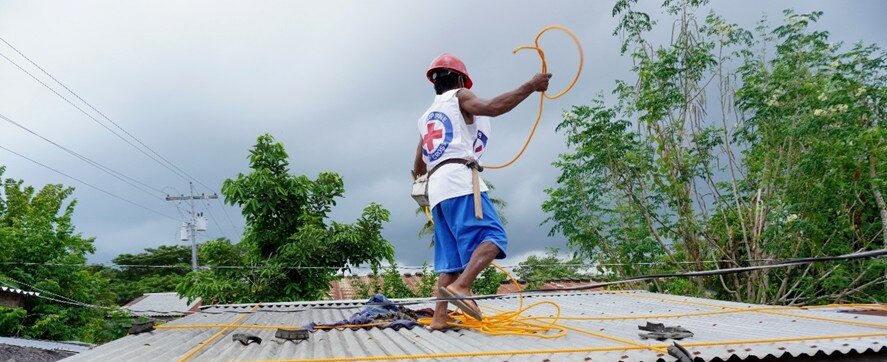
المساعدة النقدية والقسائم
Cash and Voucher Assistance (قيمة القرض النقدي) is an important part of humanitarian aid, as it allows people to meet their basic needs in times of crisis. In times of conflict and disasters, it can provide essential support to those affected, allowing them to purchase vital items such as food, shelter, and medical supplies. CVA is also a more efficient way of providing aid, as it allows affected communities to choose the items that best suit their needs. Furthermore, this form of humanitarian aid can be used as economic stimulus, providing an impetus for economic growth in areas that have been affected by crises. In this way, CVA has the potential to provide much-needed relief to people in vulnerable situations in a way that is both effective and empowering. The IFRC is a world leader in CVA, and is committed to delivering 50% of its humanitarian assistance through cash and vouchers by 2025.
“Cash and voucher assistance empowers individuals with the dignity of choice, enhances local economies, and provides rapid, efficient support in humanitarian crises.”
Angelina Savchuk (CVA Service Coordinator 510)

To this end, the منصة 121 is a إدارة المعلومات النقدية platform that we co-designed with people affected and aid workers. It aims to support National Societies to scale up their cash programmes. The platform launched in 2021 in the Netherlands, and the platform started being scaled up internationally in 2022. In addition, 510 provides Cash Information Management services to National Societies which reduces the administrative workload and introduces bite-size digital improvements in providing people affected with cash or vouchers. Recent examples are cash and voucher assistance in the Netherlands supporting the hand out of over 1 million vouchers and the implementation of the implementation of the 121 Platform in Kenya (read here) and Ethiopia (read here). So far, 510 has supported over 40 National Societies in their cash programmes.
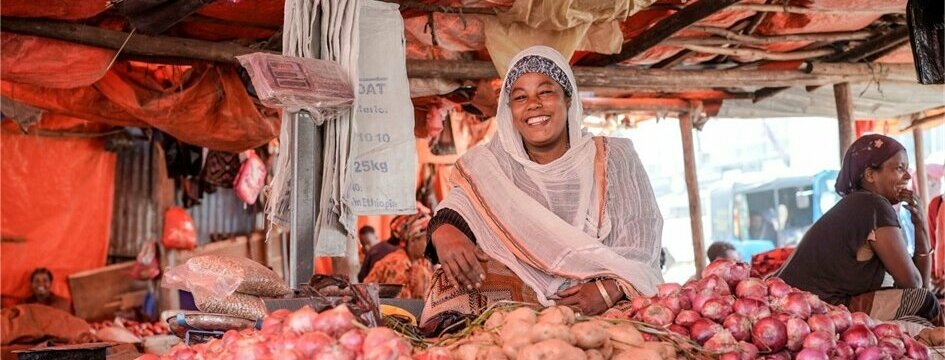
المشاركة المجتمعية والمساءلة
المشاركة المجتمعية والمساءلة (وكالة الطاقة الذرية) is a way of working that recognizes and values all community members as equal partners whose diverse needs, priorities and preferences guide everything the Red Cross Red Crescent network does. This is achieved by integrating meaningful community participation, open and honest communication and mechanisms to listen to and act on feedback data. It is an essential component in the humanitarian sector as it allows communities to be involved in decisions that directly affect their lives. Evidence and experience show that CEA helps to ensure that solutions are tailored to the needs of the community, which make them more appropriate, effective and sustainable. CEA also helps to build trust between communities and humanitarian actors, providing opportunities to build relationships, create local networks, and build resilience. It provides humanitarian actors with local knowledge, needs and insights which help to inform decision-making and the design of interventions.

“CEA is essential to the success of any humanitarian effort. It gives the people who are most affected by disasters or crises the opportunity to raise their voice and it ensures that programmes and operations are meaningful, sustainable and of high quality.“
Jonath Lijftogt (CEA Advisor 510)
The IFRC aims to place local communities at the very centre of change so that actions are effective, inclusive and sustainable. With Digital CEA, 510 supports this process. Together with National Societies and their partners, our team designs and develops products and provides services that help to foster meaningful and scalable engagement with communities affected by disasters and crises. The first Digital CEA product, the تطبيق الويب للمعلومات المفيدة (HIA), was launched in December 2019 to provide information about services the Red Cross and other local aid organizations offer. This first instance was designed with and for undocumented migrants living in the Netherlands and has been visited over 50.000 times to date. Since March 2022, HIA is also used to help Netherlands Red Cross staff and volunteers answer Frequently Asked Questions from people in the Netherlands after fleeing from Ukraine and from people living in temporary shelters while in the asylum procedure (read here). This instance has been visited over 15.000 times to date. Outside of the Netherlands, HIA is currently being set up or in use across 5 projects in 5 countries.
To further support the IFRC and National Societies in their response to the humanitarian crisis in Ukraine, 510 created a tool and a process for الاستماع إلى وسائل التواصل الاجتماعي (SML). A model pulls data from instant messaging platforms to see what people affected by crisis think about their situation, what they need and how they interact with humanitarian organizations providing support. Combining qualitative and quantitative data and identifying key trends from these messages helps the IFRC and the National Societies mitigate risks and define, implement and improve programmes and information campaigns.
In total, 510 has provided SML support scraping over 1,5 million messages and delivering 120+ reports or presentations. Most recently, the SML support has been provided in Ukraine and neighboring countries (Poland, Slovakia, Romania – Moldova and Bulgaria, read here).
Finally, together with the IFRC, National Societies, the Norwegian Refugee Council and other partners, 510 has been working on piloting and implementing the مركز المشاركة الرقمية (DEH). With DEH, we aim to increase and improve local and scalable engagement by facilitating multi-channel communication between humanitarian actors and people affected by disasters and crises. We design, configure and build a standardized technological solution that is replicable and supported across the IFRC network and that provides actionable insights into feedback from people affected. So far, we have been collaborating with 8 National Societies on DEH, a recent example being Hungary where DEH has been used by a helpdesk team consisting primarily of people who used to live in Ukraine and who had to leave their country because of the conflict (read here).
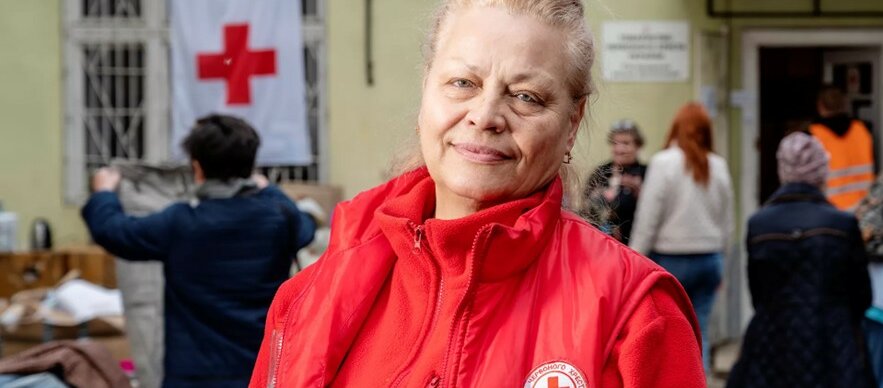
الدعم في حالات الطوارئ
When disasters or conflicts cause hardship for vulnerable populations, emergency support is necessary to provide essential relief including food and shelter, medical care, and psychosocial support. As such, it is an important part of a larger humanitarian response, as it helps to ensure that those affected by disasters receive the support they need to recover.
“Data and digital tools are the lifelines of modern humanitarian support, enabling swift, informed decision-making and efficient resource allocation in times of crisis.”
Jacopo Margutti (Emergency Support Service Coordinator 510)

Emergency support with data and digital tools has been a key area of work since the very beginning of 510. We have been deployed more than 25 times through surge as information managers into affected areas, directly supporting field-level operations and using those experiences to build more and better digital tools to help aid workers in emergencies. Damage assessments are a great example: after Hurricane Irma caused great devastation in Sint Maarten in 2017, 510 conducted a Damage Assessment using drones that were flown over the island, cataloging and open-sourcing more than 13,000 buildings. Following that experience, we researched how to automate the procedure, and ultimately developed a fully Automated Damage Assessment (ADA), first deployed in 2020 in response to the Beirut port explosion. ADA is based on a deep learning model that identifies damaged buildings in high-resolution satellite images. Automating this assessment makes it faster and far less dependent on human effort, therefore enabling 510 to quickly deliver the information that is needed. ADA was also deployed in response to the earthquakes in Türkiye and Syria at the beginning of 2023, to map damage in eight cities across the region and thus help the Red Cross and Red Crescent teams prioritize intervention areas and resource allocation (read here).
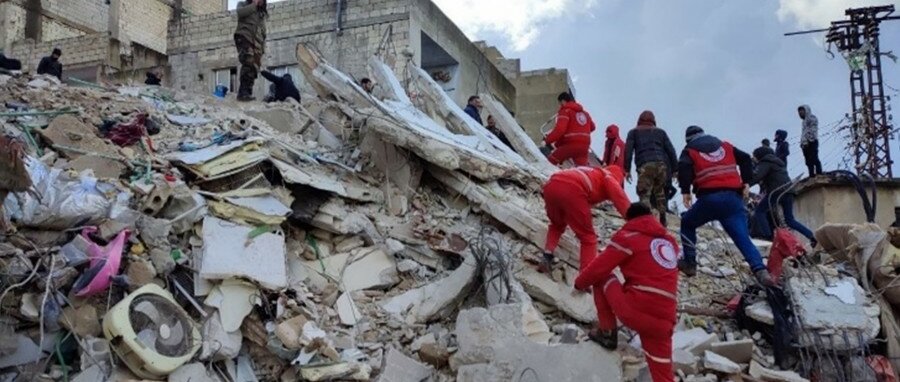
Water & Landscape Management
In the humanitarian sector, data and digital water and landscape support allow for more efficient and targeted water resource management. By using digital tools to monitor and support water resources, humanitarian workers can better understand the needs of communities, identify areas of vulnerability and provide more effective and sustainable water solutions as a form of relief to people in vulnerable situations around the globe. Digital water and landscape support also enable humanitarian workers to provide relief to more remote areas, as it can provide a faster and more accurate picture of the environment.
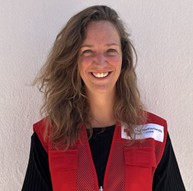
“Access to clean water and sustainable landscapes is the cornerstone of humanitarian efforts, ensuring health, resilience, and dignity for communities in need.”
Marijke Panis (Data team lead 510)
To this end, 510 developed the أداة ترميم المناظر الطبيعية which allows for easy comparison between two satellite images of the same region. The tool shows which areas have been affected by deforestation. The site suitability analysis helps identify zones that should be prioritized in the response, as well as zones where the reforestation success rate may be higher, making it an important decision support service that can guide project managers in selecting the areas to be reforested first. In terms of water security, 510 provides technical expertise to support water management in a humanitarian context. Read a recent example of digital approaches to water security and landscape restoration هنا.
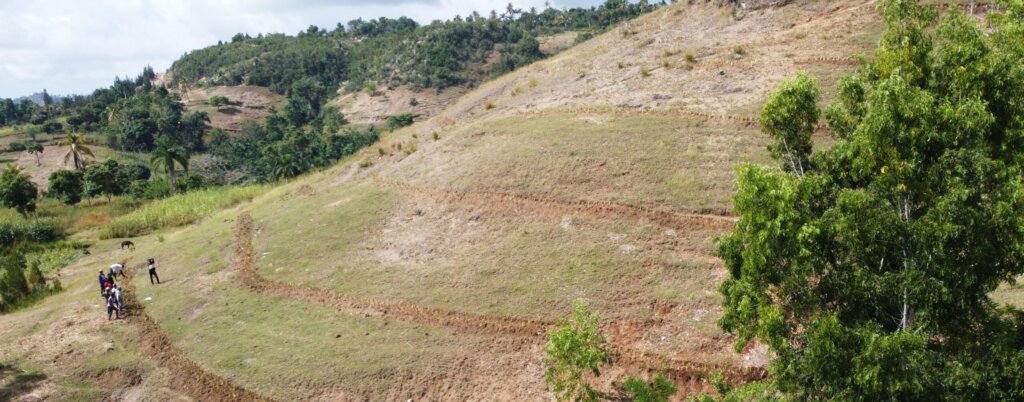
Professional volunteers & research students
Volunteers and students are integral to the success of humanitarian efforts as they bring a wealth of knowledge, experience, and enthusiasm to any humanitarian project. Volunteers in 510 are an invaluable source of support for the team as they strengthen our projects with their skills in data science, data analytics, design, geoinformation science, translations, software development, data responsibility, and business economics. Either through collaborations with organizations such as Analytics for a Better World or individuals that want to steadily contribute to a positive impact. Our volunteers work across all projects in 510. Meanwhile, students bring to 510 the latest scientific advances which are then applied in projects during graduate research work or an internship in collaboration with universities. In general, the majority of our students work on a variety of our thematic areas. By engaging with students, organizations can ensure they are equipped with the skills and knowledge necessary to effectively address the issues they are tackling. Since 2016, 510 has had the honor to work with 200+ professional volunteers, 100+ corporate volunteers, 34 interns, and 138 research students.
“Volunteers and students bring in new perspectives and vital expertise, transforming our projects and amplifying our impact. Their efforts are crucial in supporting our 510 colleagues and partners in making a difference.”
Lise Michiels (Volunteer coordinator 510)

Future prospects
As technology advances, the use of data and digital tools will become increasingly vital in improving the speed, quality, and cost-effectiveness of humanitarian aid. They help to identify needs, target resources, track progress, measure outcomes, monitor the impact of interventions, and ensure that the vulnerable populations are reached. Additionally, data and digital tools can be used to provide real-time feedback, enabling organizations to quickly adapt and respond to changing needs. The use of data and digital tools in the humanitarian field will create opportunities for more efficient and effective interventions, and ultimately, a more sustainable and equitable world for everyone. Over the next few years, 510 will focus on scaling existing products and services by working closely with IFRC, ICRC, and National Societies to support millions of people affected. We will focus on the sustainability of these products and services, and innovate with business models that will allow us and National Societies to implement data and digital products and services cost-effectively.
“With an unwavering commitment to security, scalability, and cost-effectiveness, data and digital technology in the humanitarian field offers unprecedented potential for creating a better future. Investing strategically in these solutions has the potential to transform how we tackle the most urgent humanitarian issues.”
Richard Lines (Digital team lead 510)
هل تريد أن تتعلم المزيد أو تعمل معًا؟
تواصل معنا الدعم@510.global or contact our coordinators directly هنا.